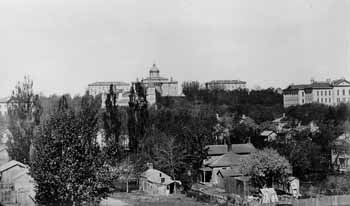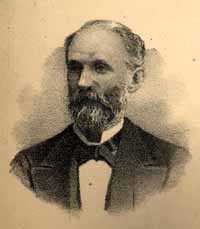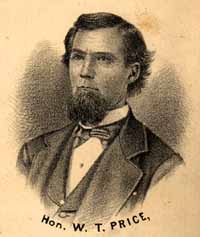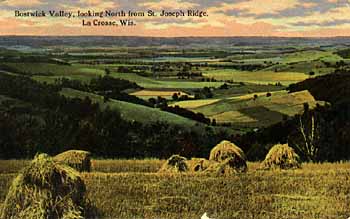

 |
 |
|
At the time of my coming, sugar was worth from seven and a half to eight cents per pound. Glucose was not then made from corn in any commercial quantity, and all kinds of syrups as well as sugar were high in price. Farmers were growing the sorghum plant and making molasses therefrom; occasionally they found considerable raw sugar in the bottoms of the molasses barrels. This led to the agitation of manufacturing merchantable sugar from the sorghum plant. About the same time great interest was awakened in the matter of preserving green crops in great pits called "silos," a system which originated in France. Governor Smith was in the executive chair during the winter of 1881, and John T. Kingston of Necedah, was a member of the senate. Mr. Kingston came to me saying that the farmers wanted experiments in the manufacture of sugar from the sorghum plant. I told him of their interest in the silo and silage production. I well recall how he wrote the first draft of a bill on a piece of brown paper, appropriating a sum of money to the "Professor of Agriculture for the purpose of conducting experiments in the production of sugar from amber cane and in the ensilage of fodders." The bill met with a kindly reception by most members of the legislature. After passing the lower house, it went over to the senate for consideration. The late "Bill" Price, as he was commonly called, saw fit to oppose the measure. When the bill finally appeared on the calendar for concurrence, Mr. Price turned to his nearest neighbor, Senator Rankin, of Manitowoc county, and with a twinkle in his eye, said: "Joe, there is a pup that will grow to be a dog--we must choke it now." He was right. The pup, a very small one at that time, has indeed grown to be a very considerable dog, and it does not appear to have even yet reached its limit. The Agricultural department began a forward movement with that appropriation and has never ceased its onward march to the present time. Sugar was made in considerable quantities from the sorghum plant the first two years as the seasons were favorable. Had the prices for sugar and syrup remained as high as they were then, the sorghum plant would have indeed proved an important factor in our agriculture, but the prices for sugar were falling and men had learned how to manufacture fine syrups from the starch of the corn grain. A silo was built and silage made. To the surprise of all, cattle ate the silage and seemed to thrive upon it. The next year Jeremiah Rusk was in the executive chair and the legislature (meeting in annual session) renewed the appropriation on the governor's recommendation. The following year (1883) Governor Rusk recommended the establishment of an experiment station, and the legislature complied with his suggestion. |
 UW 1875-80 |
|
 William E. Smith |
 |
|
 |
||